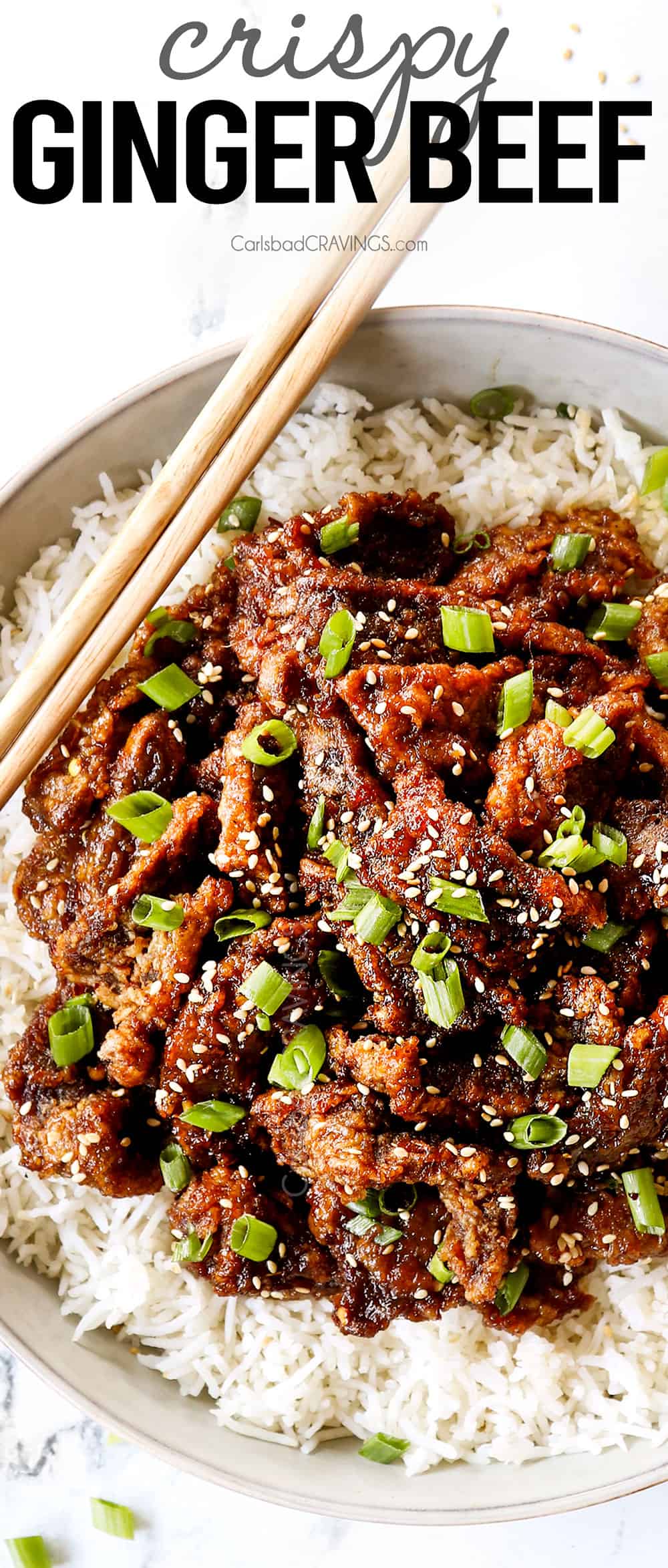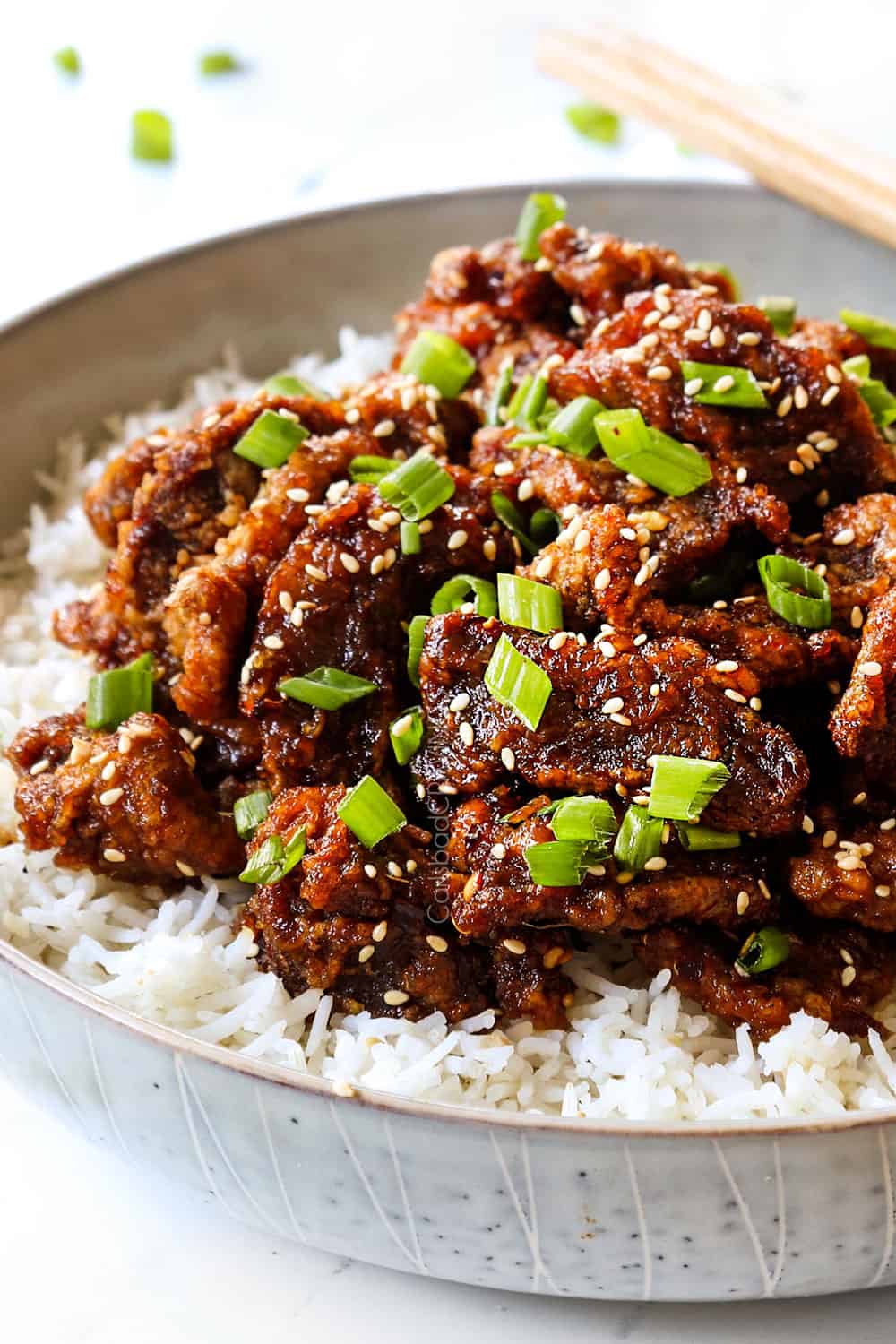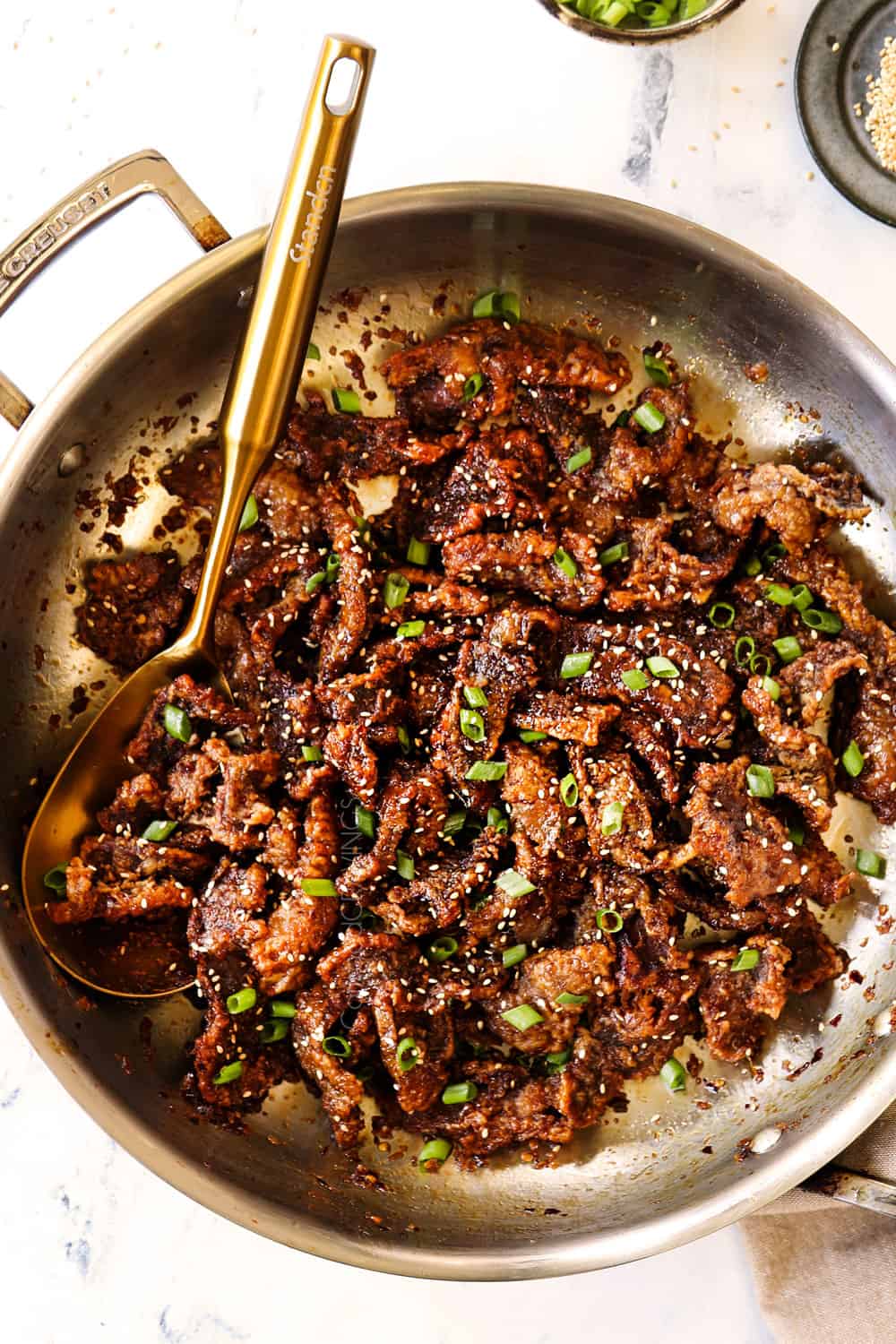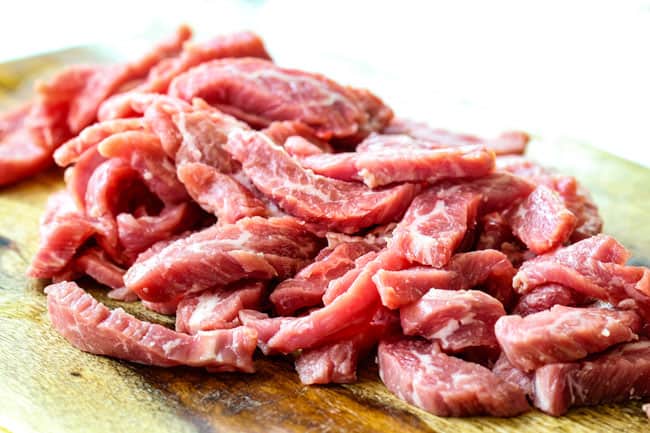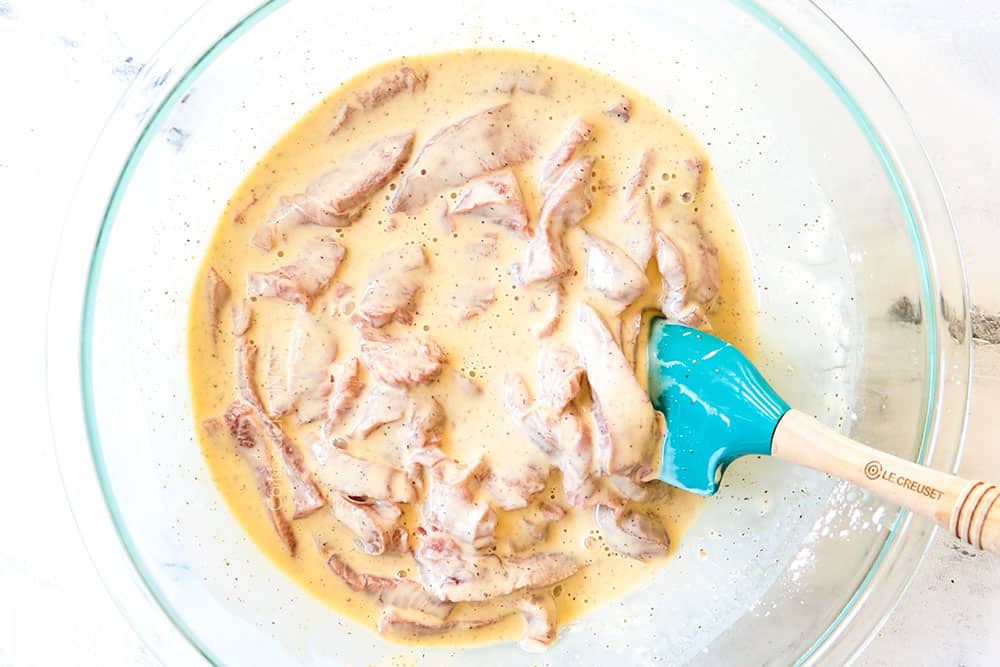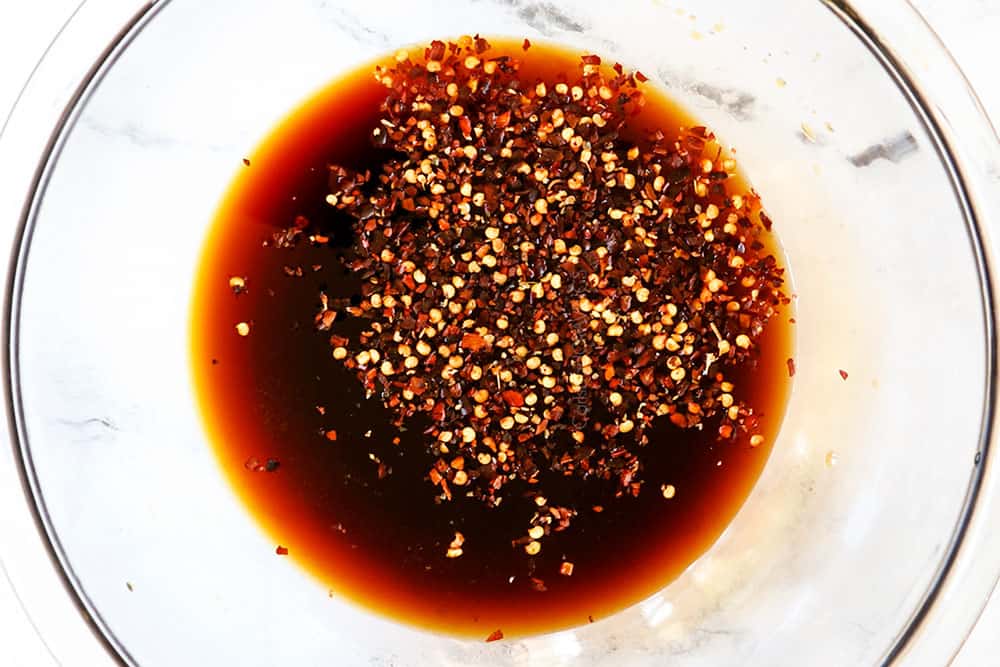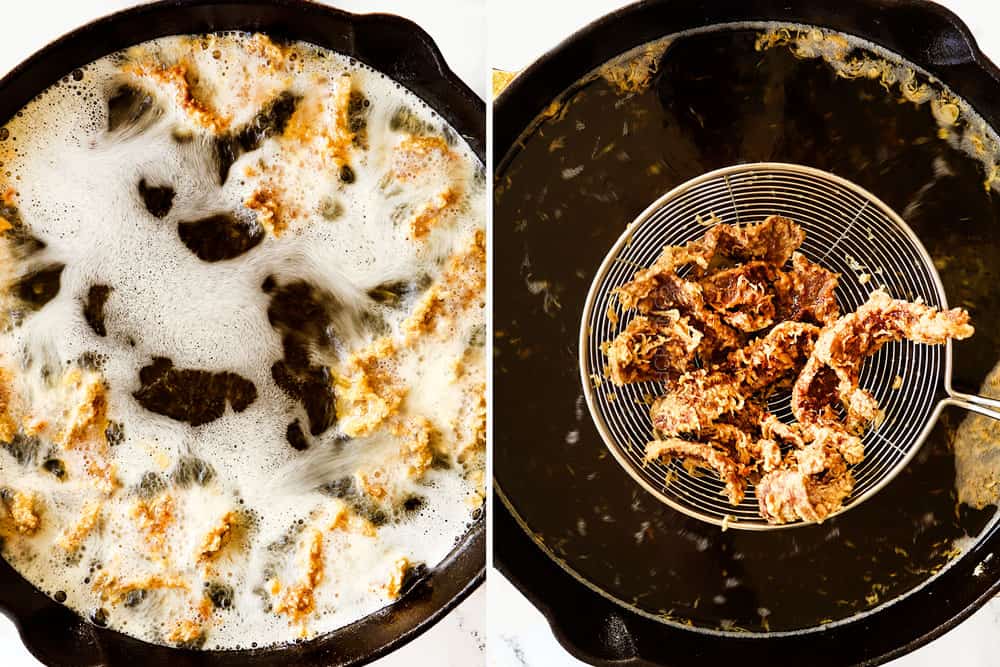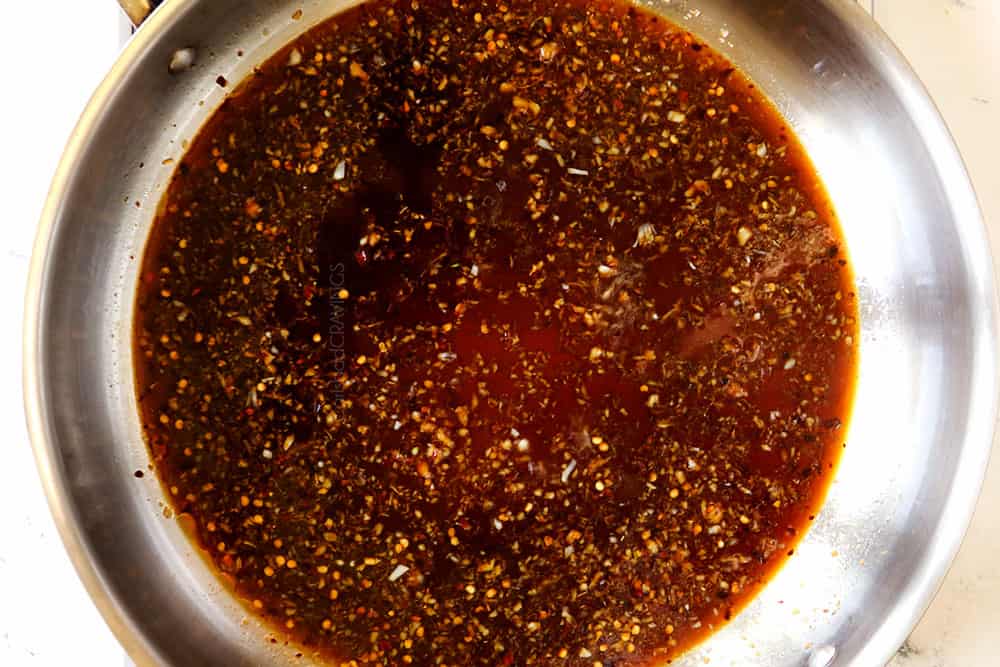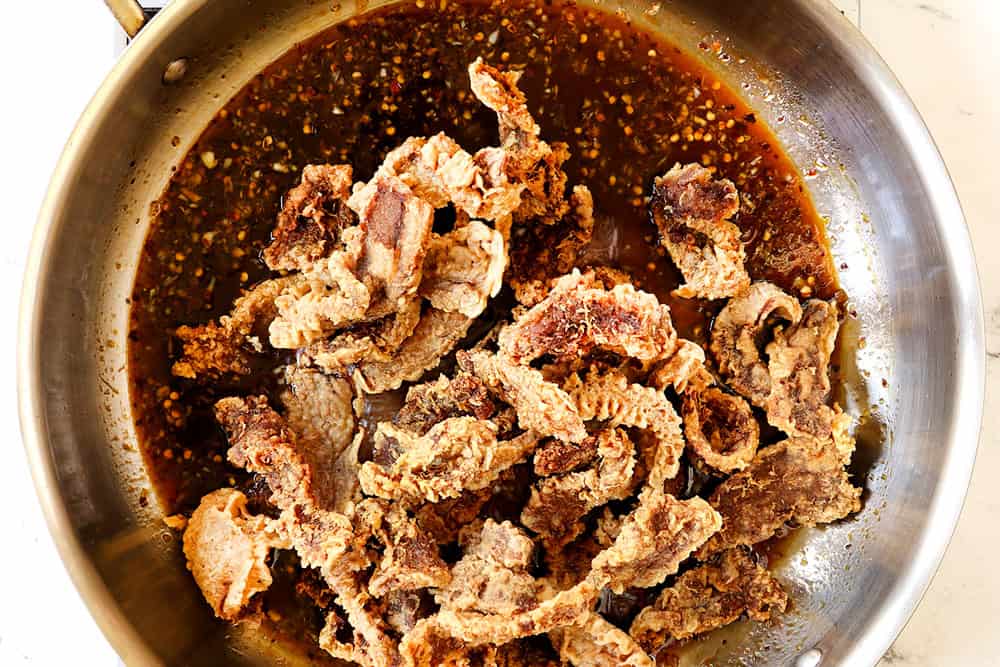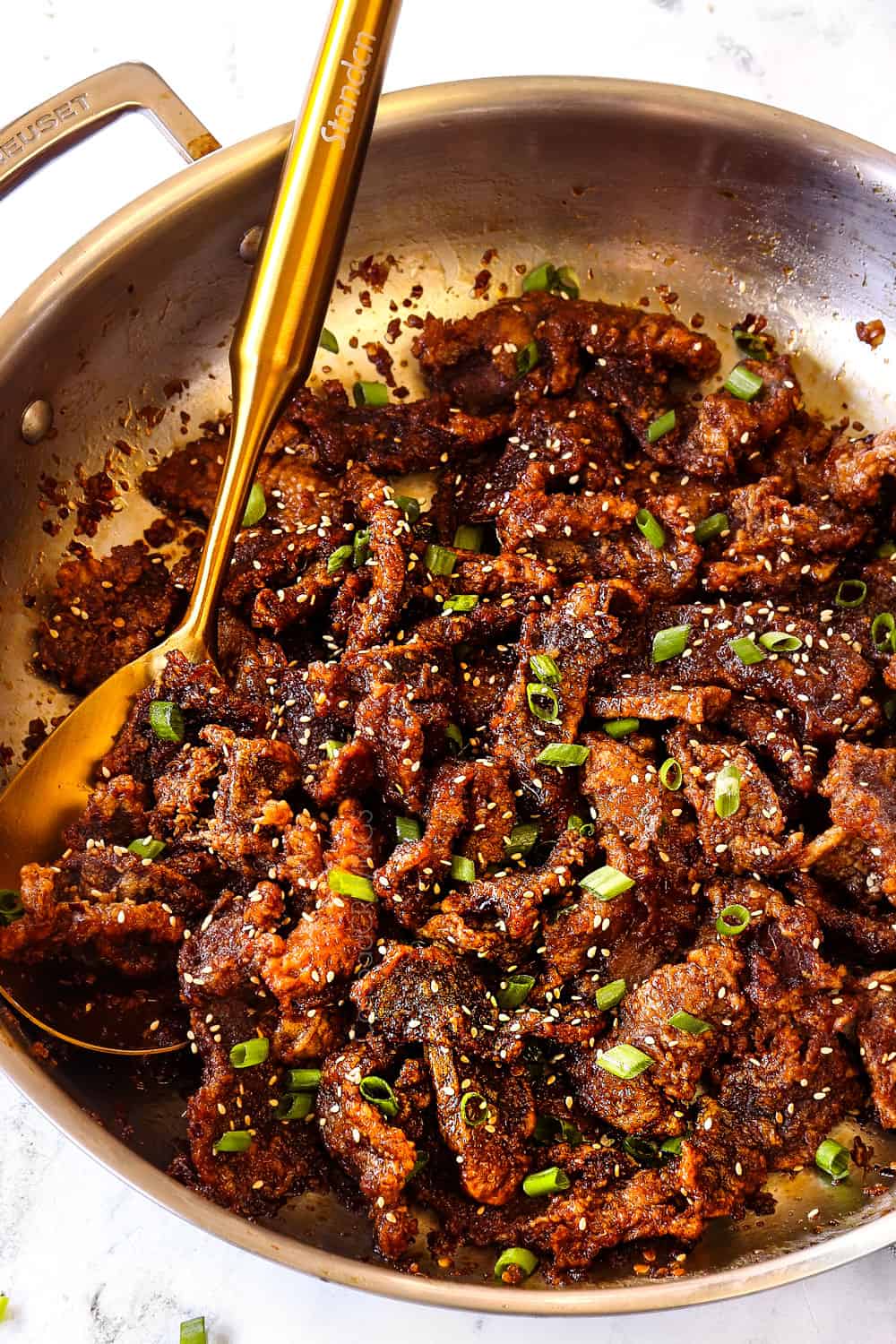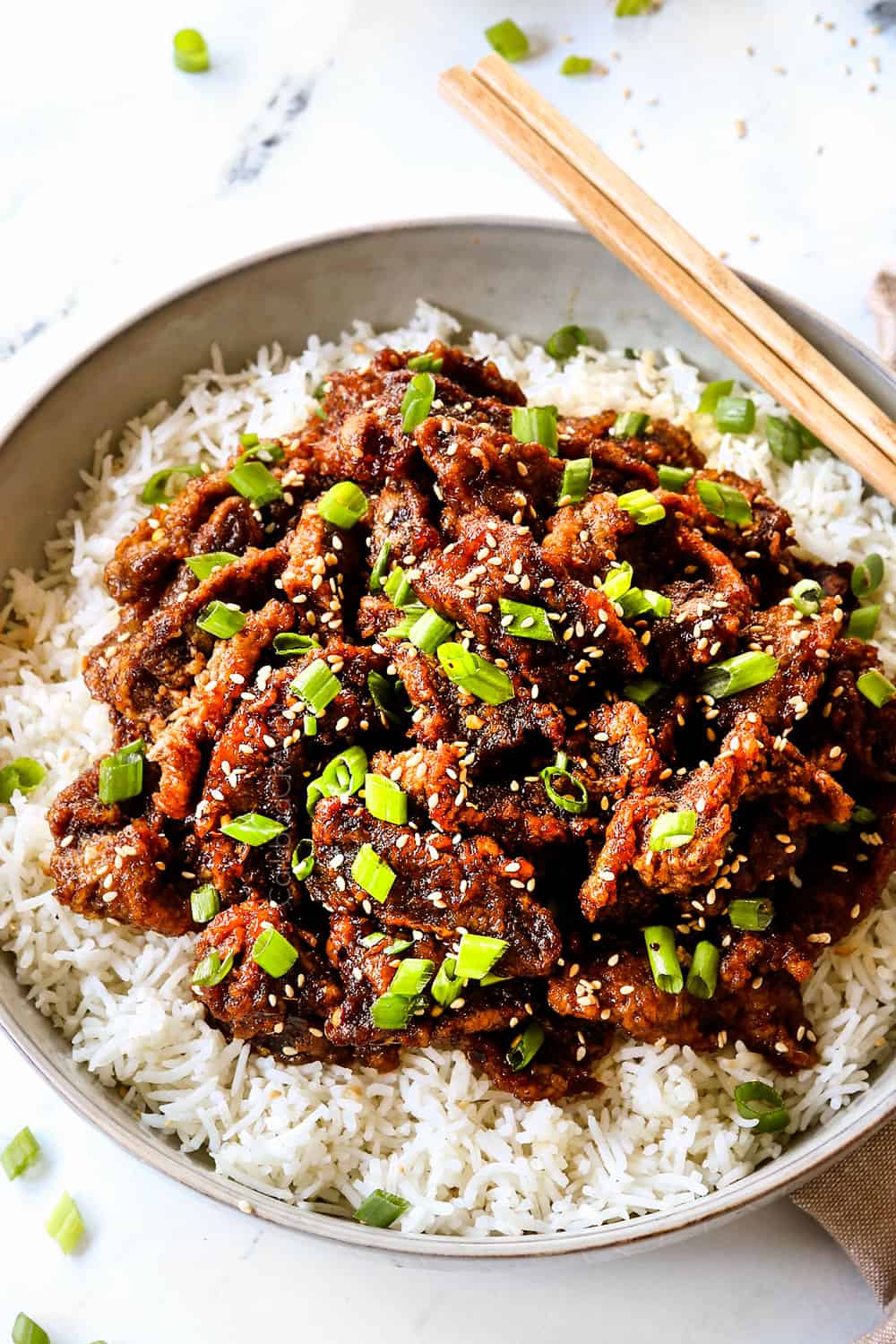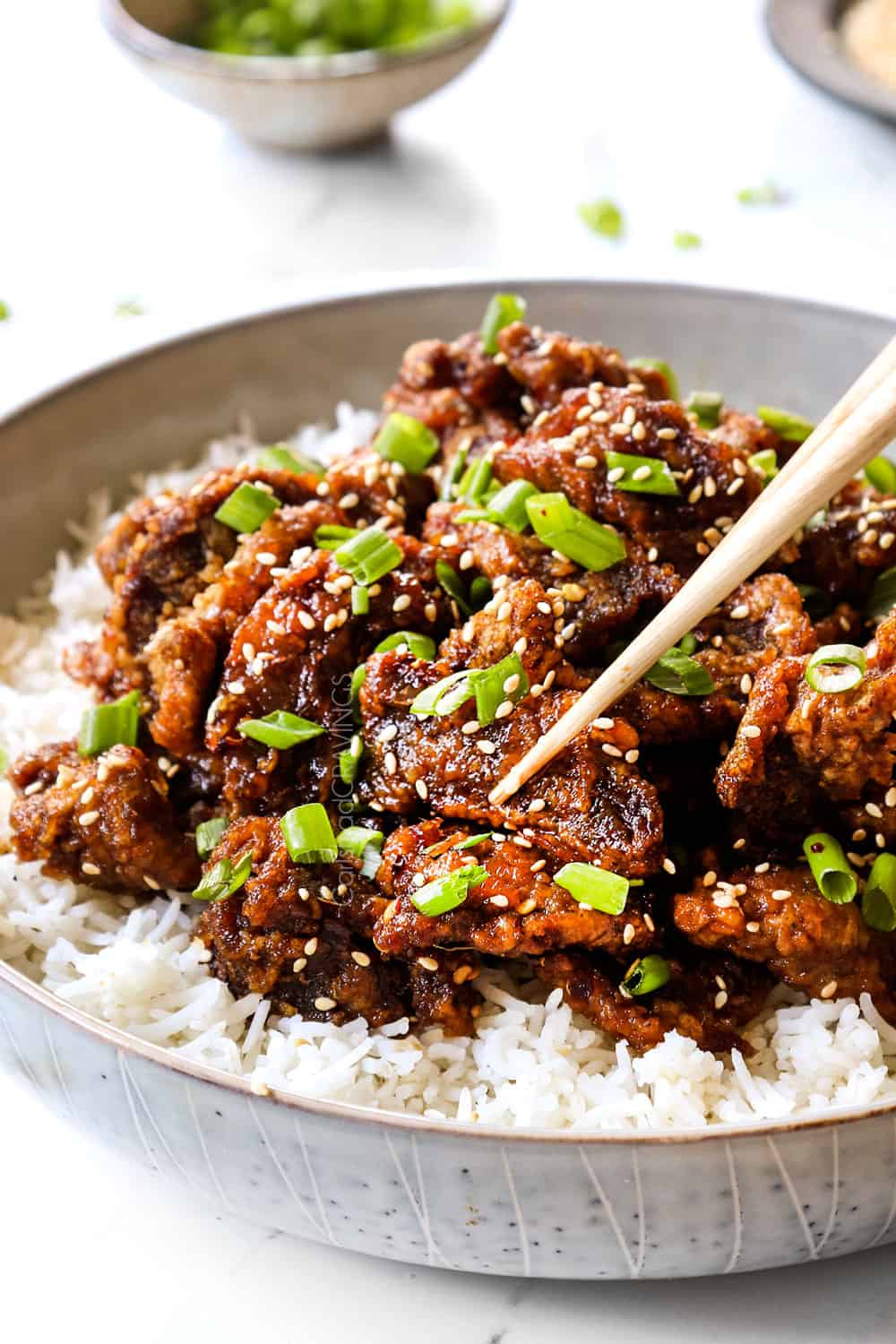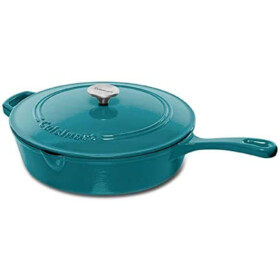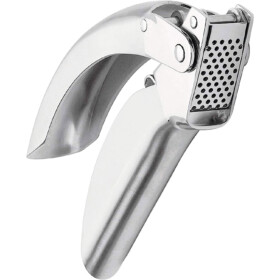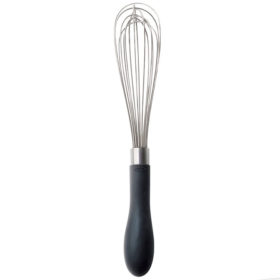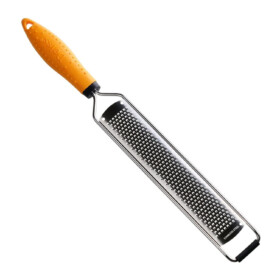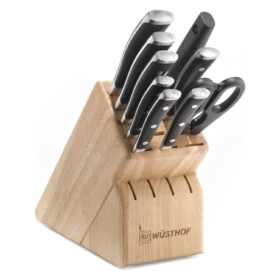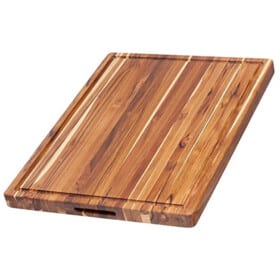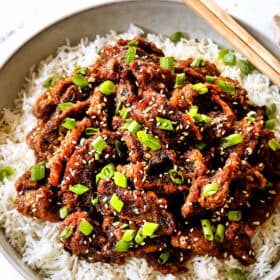Chinese Beef recipes are easy and delicious to make at home as long as you have the right recipe! Don’t miss these stunners: Beef and Broccoli, Crockpot Beef and Broccoli, Mongolian Beef, Szechuan Beef and Pepper Steak.
pin this recipe to save for later
How to Make Ginger Beef RECIPE Video
About GINGER BEEF
This Ginger Beef recipe is downright swoon worthy. I literally stopped in between plating the final shots so I could devour the leftover beef in the skillet. But I can’t take credit for this new favorite recipe, it comes from Joanna Cismaru’s (Jo Cooks) new Cookbook “The Big Book Jo’s Quick and Easy Meals” loaded with 200 recipes each accompanied by gorgeous photos. The recipes are approachable, flavorful and what I especially love is how well rounded they are. The cookbook not only covers dinner recipes (chicken, beef, vegetarian, soup, pasta, etc.), but also includes breakfast, lunch, appetizers, side dishes in a variety of accessible cuisines AKA there’s recipes for everyone and for every occasion! Here’s just a sampling of the recipes you’ll find inside:
Coconut Curry Chicken Roasted Chicken and Vegetables Baked Honey-Glazed Pork Ribs Blue Cheese Burgers with Crispy Fried Onions Skillet Shepherd’s Pie Maple and Mustard-Glazed Salmon Arugula and Basil Pesto Risotto with Sautéed Mushrooms Churro Apple Pie Cookies Mini Blueberry Galettes
ingredients for GINGER BEEF
This Ginger Beef recipe transforms everyday ingredients into an epic better than takeout meal. Here’s what you’ll need (full recipe measurements in the recipe card at the bottom of the post): I don’t usually batter and deep fry my beef, but man, is it worth it. While frying crispy Ginger Beef might not be a weeknight, everyday cooking occurrence, it is a super fun splurge on the weekends and way better and less expensive than takeout! The strips of beef are tossed in a simple batter of cornstarch, flour, water and egg then deep fried until crispy. The crispy shell acts like a sponge, seeping in all of the sauce for addictingly flavorful morsels you won’t be able to stop eating! This Ginger Beef recipe is perfection for all those sweet and spicy fans out there. The sauce is my dream combination of sweetness from the brown sugar, spiciness from the red pepper flakes, umami depth from the soy sauce, subtle balancing acid from the rice vinegar with bold aromatic kicks of ginger and garlic. Just whisk all of the ingredients together, simmer for 2 minutes, then add the beef and cook another minute or two until the beef is saturated in the finger-licking sauce, that is quite literally, finger-licking good. By making this Ginger Beef at home, you can make it just how you like it. I made the recipe as written and it was perfect (highly suggest!) but you can also stir fry the beef instead of deep frying or make the sauce less spicy for the little ones. That’s the beauty of making your own crispy beef at home!
WHAT KIND OF BEEF IS BEST FOR GINGER BEEF?
I recommend either top sirloin or flank steak for this Ginger Beef recipe.
Flank steak: is my go-to for Chinese dishes. It boasts just the right amount of marbling for maximum flavor and cooks up quickly without becoming chewy or rubbery (just don’t overcook!). It is also less expensive than prime cuts but still gets the job done. Top sirloin: is a little pricier but is the more tender option. It’s relatively lean with exquisite finely marbled fat so it emerges fabulously tender and boasts great beefy flavor, generally second only to the ribeye!
THE BATTER
Cornstarch: is the base of the frying batter. It helps coat the beef, absorb moisture and prevent gluten development, which makes the coating crispier. Flour: I use all-purpose flour but I’m sure gluten free flour, almond flour, etc. would also work. Egg: one egg is used in the batter to help the flour and cornstarch bind together and form a better moisture seal. The egg prevents the batter from absorbing excess oil and making the beef unappetizingly greasy. White pepper: is milder than black pepper with a more complex, earthy flavor and less pungent heat. If you don’t have white pepper you may substitute with black pepper. If you know you like heat, swap the white pepper for the equal amount of black pepper, otherwise use ¾ the amount of black pepper.
THE SAUCE
Soy sauce: provides the depth of savory umami. Use reduced sodium soy sauce so your crispy beef isn’t too salty. Dark soy sauce: is thicker, darker, and slightly sweeter than regular or light soy sauce. If you don’t keep it on hand you may substitute with regular soy sauce mixed with 1 teaspoon molasses and ½ teaspoon brown sugar – works like a charm! Brown sugar: is the sweet in the sweet and spicy! Use brown sugar for its richer flavor. You may need more or less depending on personal taste. Rice vinegar: use unseasoned rice vinegar. Water: stretches the sauce and, most importantly, dilutes the flavor so its not too strong.
THE STIR FRY
Sesame oil: a “secret ingredient” that adds an irresistible, subtle nutty flavor. Use toasted sesame oil if you can instead of regular. Ginger: Ginger Beef’s namesake so don’t skimp! The pungent ginger cuts through the sweetness of the sauce. You will need 1 tablespoon freshly grated ginger. I like to freeze ginger so it’s always at my fingertips. To freeze ginger: grate it, spread it by the teaspoon or tablespoon on parchment paper and flash freeze until solid, about 1 hour. Transfer to an airtight container or plastic bag for up to 6 months. You can add frozen ginger directly to your stir fries. Garlic: you can purchase the pre-bagged, already peeled garlic to save time. They are actually less expensive than whole garlic cloves (at least when I did the math). I also love the whole frozen garlic cloves – NOT the frozen minced ones which I don’t like or recommend.
GARNISH
Green onions: add subtle onion flavor without overpowering the Ginger Beef recipe. Sesame seeds: garnish with toasted sesame seeds for subtle nutty crunch.
HOW TO MAKE GINGER BEEF
Step 1: Thinly slice the steak. Slice your beef into 1/4-inch slices across the grain.
Step 2: Batter the beef. Whisk the cornstarch, flour, egg, water and white pepper together in a bowl then add the beef. Set aside while you make the sauce.
Step 3: Make the sauce. Whisk the soy sauce, dark soy sauce, water, rice vinegar, brown sugar and red pepper flakes together in a bowl.
Step 4: Deep fry the beef. Heat about 2 tablespoons vegetable oil in a deep-frying pan or Dutch oven to 350 degrees F. Fry the beef in batches until golden, about 4 minutes then transfer to a paper towel lined plate.
Step 5: Simmer the sauce. Sauté the garlic, ginger and red pepper flakes for 1 minute then whisk in the sauce. Simmer for 1-2 minutes, just until slightly reduced. The sauce will not thicken much because it is meant to soak into the battered beef.
Step 6: Combine. Add the beef to the sauce and simmer for 1-2 minutes to allow the sauce to seep into the beef – that’s where the tantalizing flavor comes from!
Step 7: Serve with rice and garnish with green onions and sesame seeds.
Do I have to deep fry the beef?
The crispy battered beef is the signature of Ginger Beef but you can stir fry the beef instead – just don’t call it Ginger Beef! To stir fry:
Skip battering the beef and instead marinate the beef in 3 tablespoons reduced sodium soy sauce, 2 teaspoons cornstarch and 1 teaspoon white pepper for 30 minutes at room temperature. Whisk the sauce ingredients together, adding 2 teaspoons cornstarch not called for in the original sauce recipe. The original sauce does not call for cornstarch because it is not supposed to/will not thicken so it can be absorbed by the battered beef. Working in batches (small enough so the beef can fit in the skillet in a single layer), heat 1 ½ teaspoons peanut oil/vegetable oil in a large nonstick skillet over high heat until very hot and sizzling. Add beef to the skillet and break up any clumps; cook without stirring for 1 minute, then stir and cook until beef is browned and almost cooked through, about 1-2 minutes (it will cook more in the sauce). Don’t overcook or it won’t be as tender! Transfer beef to a large plate and cover. Sauté the garlic, ginger and red pepper flakes for 1 minute then add the beef back to the skillet and toss to combine. Whisk the sauce to recombine then add to the skillet. Cook, stirring constantly, until the sauce is thickened and the beef is cooked, about 1-2 minutes. Dig in!
Fried Beef Tips
Freeze the beef for easier slicing. Place your beef in the freezer 60 minutes before slicing. This will help the beef not wiggle beneath your knife so it’s much easier to slice thinly and cleanly. The frozen beef thaws quickly, so I suggest slicing the beef into thirds and working with one third at a time while the rest of the beef stays in the freezer. Slice beef across the grain. When you look at your steak, you can see the muscle fibers “grain” running through the meat in one direction. You want to cut perpendicular to the muscle fibers so they become as short as possible, as opposed to parallel which will result in long muscle fibers and chewy, rubbery meat. Bring the beef to room temperature. Add the beef strips to the batter first so it has time to come to room temperature. You don’t want cold beef added to hot oil! Use the correct oil. Vegetable oil is my go-to oil for frying because it has a smoking point comfortably above frying temperature and is very neutral. Other oils suitable for frying (although some aren’t as neutral as others) include: peanut oil, soybean oil, safflower oil, canola oil and cottonseed oil. Use an instant read thermometer. I highly recommend an instant-read thermometer to ensure you have the correct oil temperature not only at the beginning of frying, but throughout the entire frying process. Test oil. If you don’t have a thermometer, medium-high heat should be about right, but every stove is different, so you will want to test the oil before adding the beef. Test the temperature with a pinch of flour or better yet, an extra piece of beef. If it boils, your oil is ready but if it boils and the test piece turns dark within a minute or so, your oil is too hot. You will have to remove it from the heat, wait a few minutes, return to heat and try again. Cook the beef in batches. You will need to cook your beef in several batches in order for it to cook evenly and not clump together. Break up beef clumps. Use a fork and a knife, tongs, etc. to break up the beef once it’s added to the hot oil, then stir occasionally so it doesn’t clump together. Cook evenly. You can either use enough oil so the beef is completely submerged, in which case the strips are extremely easy to cook evenly, or use less oil and take care to flip the pieces over halfway through frying. Don’t overcook beef. Overcooked beef means tough beef! Fry just until the outsides are golden, about 4 minutes. Line on paper towels. Use a spider trainer, fine mesh sieve or slotted spoon to transfer the crispy beef to a paper towel lined baking sheet in a single layer without touching. You don’t want the pieces touching or they will steam; you also don’t want them sitting in oil or they won’t be as crispy. The sauce will be thin. There isn’t a thickening agent added to the sauce, like cornstarch, because it is meant to be thin. It will NOT thicken very much as you simmer it. We want the sauce to be thin so it will penetrate the breading and soak into the beef, enveloping it with flavor. The cornstarch from the breading will also thicken the sauce as it combines together. Crispy or less crispy beef. The longer the beef simmers in the sauce, the more sauce it absorbs and the less crispy it becomes – but more delicious in my opinion. I like the Ginger Beef best when virtually all of the sauce is absorbed by the beef because this means it is saturated in the incredible sauce. If you want the crispiest beef possible, however, then you will want to just toss the beef in the sauce until evenly coated and serve immediately.
Crispy Asian Beef Recipe Variations
Make it less spicy. Ginger Beef is supposed to have a kick. The spiciness balances the sweetness of the sauce. If you are sensitive to heat then start with ½ teaspoon red pepper flakes and add more to individual servings if desired. Stir fry the beef. Instructions to follow. Add broccoli florets. Cut the broccoli into bite-sized pieces. Stir fry them for about 3 minutes before adding the garlic and ginger. Add carrots. Thinly slice the carrots so that they cook at the same rate as the other veggies if using. Stir fry for 3 minutes before adding the ginger and garlic. Add bell pepper. Cut the bell pepper into 1” pieces so it won’t become too soft. Stir fry for 3 minutes before adding the ginger and garlic. Add snow peas. Trim the ends and add with the sauce, they only need a minute or two to simmer.
CAN I PREP THIS RECIPE IN ADVANCE?
Yes! This Ginger Beef recipe comes together quickly, but you can prep individual components ahead of time.
Slice the steak. You can do this at any time before making the recipe then store in an airtight container in the refrigerator. Bread the steak. Add the beef to the batter, cover and refrigerate for up to 24 hours before frying. Let sit at room temperature for about 60 minutes to come to room temperature before frying. Make the sauce. Whisk the ingredients together up to 24 hours in advance and store, covered, in the refrigerator. Mince aromatics. Prep the ginger and garlic up to 48 hours ahead of time and store in an airtight container in the refrigerator.
WHAT TO SERVE WITH GINGER BEEF?
This Ginger Beef recipe should be served with some sort of rice to offset the sweet and spicy beef. Here are some options:
Rice: I like jasmine rice or brown rice but any rice will work. Just pop the rice in your rice cooker for a hand’s off, easy side or use a microwave rice pouch for a quick single serving. Low carb: cauliflower rice, quinoa, broccoli rice or a blend of brown rice and any of the aforementioned options. You can also use low carb noodles such as zoodles or spaghetti squash. Appetizers: for a complete Asian feast, pair the Ginger Beef recipe with Potstickers, Pineapple Cream Cheese Wontons, Crab Rangoons, and/or Egg Rolls. Salad: some of our favorite Asian-inspired salads include Ramen Noodle Salad, Crunchy Asian Salad, Chinese Salad, and Asian Pineapple Salad. Soups: Asian soups make a fantastic starter, such as Ramen, Hot and Sour Soup, Wonton Soup, Egg Drop Soup or Miso Soup.
HOW TO STORE AND REHEAT GINGER BEEF
This crispy Ginger Beef reheats wonderfully for lunches or dinners, it just won’t be quite as crispy, but still fabulously flavorful.
How to store: store leftovers in an airtight container in the refrigerator for up to 5 days. How to reheat in microwave: transfer small portions to a microwave safe dish, heat for one minute, stir then continue to heat at 30 second intervals. How to reheat on the stove: reheat in a skillet over medium-low heat, stirring often.
CAN YOU FREEZE GINGER BEEF?
Yes, Ginger Beef freezes well but it won’t be crispy once thawed. To freeze:
Let the Ginger Beef cool completely in the refrigerator. Transfer to an airtight container. If using a freezer bag, squeeze out any excess air to prevent freezer burn. Label and freeze for up to 3 months. When ready to eat, let it thaw overnight in the refrigerator. Reheat in the microwave for 60 seconds then at 30 second intervals or gently on the stove.
Tag @CarlsbadCravings and Use #CarlsbadCravngs Leave a Review, I Always Love Hearing From You!
